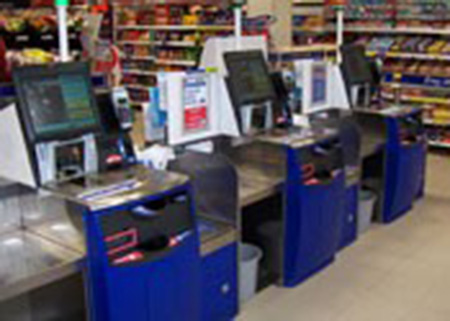6 minute read
Retail Labour Optimisation in the Next Decade

Mike Johnson
Customer Program Manager
Wokingham, UK
I started my career in retail in 1999, which seems and is indeed a long time ago now. I remember being trained at BT Cellnet as one of their first data specialists. Their vision was that everyone would have a “mobile device” that had their bank cards, passport, plane tickets and enable them to watch TV on their phone! This vision seemed very farfetched, even a little science fiction to me. We are talking about the days of WAP, which was mobile internet that ran at a heady 27 Kbps! From here, we have progressed through five generations of wireless internet. With 5G, now you can achieve speeds of 100 Mbps.
Back then, as a store manager, one of my duties was to resource my store effectively. To do this I had to know my team’s availability, scheduling them to what I thought was the average flow of footfall for my store. In reality, that meant everyone in on a Saturday, fewer people in on a Wednesday and spread everyone out over the remaining days. This worked fine for me, and as I progressed through my career, I learned the skill of scheduling. Eventually, I found the best fit for each new store I ran, where I mostly kept a delicate balance between delighting my customers and having a happy team who were scheduled to work at a time that was agreeable to them.
As I moved through the ranks, I developed different perspectives. As a regional, it became clear that the skill of scheduling is not one that every manager possesses. It became clear as a Labour & Efficiency Manager at a large UK automotive retailer that the operations team would feather their own nest to make sure they hit their sales targets. Completely understandable if you are not rewarded on profit.
Every step on the journey gave better insight and clarity on the frustrations that each layer of management in a business using traditional labour strategies faces. Variability is often the single biggest blocker to getting every site profitable, and labour is often the single biggest detractor to a healthy bottom line. So getting your labour plan wrong can be very costly.
- Just how do you standardise the approach and mitigate skill variability while generating a fair labour plan that can withstand scrutiny?
- How can any business optimise their workforce whilst achieving their desired customer satisfaction results? After all, customers will demonstrate their dissatisfaction by choosing not to return if they feel their needs are not being met!
These are often the most challenging questions retail leaders face today. The focus on these issues has intensified over the last decade as we see the merging of technology with e-commerce, the gig economy, and traditional bricks and mortar retail. But, where do you begin?
During the early 2000s, technology became front and centre in supermarkets. Tesco introduced the first self-service tills in 2005. The reaction was one of fear from the staff, fearing for their jobs. One of trepidation from the public. The introduction of technology took some getting used to, being served by a “robot” for the first time led to the removal of “basket only” tills in many locations and the ability to supervise 6-8 banks of till points by a single person. This increased throughput of products, reduced queue times and changed shopping habits forever. In 2022, many retailers, from convenience stores to budget supermarkets, have included or are working on plans to include self-service tills.

But what next? What does the future hold for retail, and how will we utilise the advance in technology over the next decade?
Several opportunities are likely to develop:
The move to a more cashless society is likely to accelerate. After the recent impact of the pandemic, more people have moved away from using cash, even away from using cards, as their contactless details are stored on their mobile devices. This presents an opportunity to move past self-service tills and even towards “Checkout free” store operations. We see trials in London already, Amazon leading the charge, but with Sainsbury’s, Aldi and Tesco all following in the last 12 months with trial sites.
On-demand delivery services, again driven by the pandemic, have seen a massive surge in the UK and across the globe. Of course, as it stands, this means a shift in the activities store staff are conducting. At smaller convenience locations, the team picks and packs items for collection by their delivery partner. This is an evolution of the home delivery, weekly shop style services larger stores would service.
This leads to new challenges: how many people does the store need, how many are required on the tills, how do you still serve in-store customers effectively whilst serving delivery customers, what developments will the in-store layout require, will we see new designs to provide better flow of this activity?
One development that we have seen recently copes with the increased demand for home delivery with lead times of less than an hour and utilises unused retail space. Supermarket retailers and hospitality businesses have developed so called ‘dark stores’. At their simplest these are retail or production spaces which have no customers, with systems and processes lifted directly from the traditional operating model built to serve physical customers. Over time these operations will evolve to best serve the needs of the delivery model, but ultimately there will always be some element of human input to replenish, pick orders and produce.
We also see a shift in labour demand away from the grocery retailers and more towards the “Gig Economy.” Masses of cyclists in their branded kit roam around city centres delivering everything from a latte, a burger and chips or cat food!
How will technology help resource the gig economy more effectively? Will the future see masses of delivery bots bringing our every whim to our front door or drones in the sky dropping food to drop spots!?
Well, based on the evolution of the retail industry in the last 20 years, anything is possible! Back then, I would never have imagined that our reality would be HD movies on our phones and much more! I also never imagined that we could use Artificial Intelligence and Machine Learning to make the days of scheduling teams in Excel to put an A4 print on the wall a distant memory!
So, what steps are you taking to give your business the edge during these challenging times? Those who embrace technology to standardize their labour strategy can reduce variability across the business of new or less skilled managers, making sure your sites are resourced effectively and reducing costs by making sure the front-line workforce is available where and when they are needed. Your business is better positioned to serve your customers, giving them good service but great value for money.
Suppose there are ways to save on your highest cost – labour – by getting your schedule forecast as accurate as possible? This enables you to invest or re-direct cash to other business areas to create stability, increase wages, plug skills gaps or offer your customers better value for money by protecting them from all the operational cost increases.
The great news is that in 2022, technology can help businesses get the right people in the right place, doing the right thing, at the right time in the right way! With the rising costs of doing business biting in every aspect, this is more important now than it has ever been.
Harnessing this technology can help offset some of the additional costs. Right now, we are all facing an increase in daily living costs. This also affects businesses, which means that some key areas should be on the minds of business leaders. There is only so much money, and the increasing costs need to be passed onto the consumer at some point. Therefore, any opportunities for savings may give the competitive edge! Many businesses start their workforce management / labour optimisation journey and lose steam after the first couple of years. Maybe they don’t revisit their original labour standards, maybe they handover the management of these to a finance representative to save money, or it maybe something else that leads them away from a structured way to create their labour plans.
It is commonplace that businesses try to make incremental improvements themselves, giving a handful of people the responsibility. The reality of this strategy is that there are savings in cost, but the impact is limited. The reason, simply because there is only so much you can do using traditional tools and with limited resource. Those who are serious about standardising their labour strategy will turn to technology, knowing that leveraging this powerful tool will automate and standardise many of the aspects that make it impossible to effectively implement changes at a company level using a relatively small team of people.



